EA pulled back the curtain today on Knockout City during Wednesday’s Nintendo Direct, and the new competitive multiplayer game centers on the noblest of all sports: dodgeball. The game moves the beloved childhood sport from black tops and school gyms to futuristic rooftops, construction sites, and bustling city streets. Even after watching the debut trailer you probably have a few questions: What the heck is this thing, why should I care, and how much is it going to cost me? I recently spent several hours playing the game and have returned with answers to all of those questions.
What Is It?
Knockout City is a team-based, competitive dodgeball game launching May 21 to PlayStation 4, Xbox One, Switch, PC (Steam/Origin). It’s being developed by Velen Studios, the team that developed Mario Kart Live: Home Circuit. Tonally, it taps into the same well of wackiness of games like Fortnite or the recent Destruction AllStars with an over-the-top, lighthearted tone
Described by Velen as “Dodgebrawl”, the goal of eliminating players by pelting them with balls remains, but there’s a lot more sizzle to the steak. For one, players can charge up their throws, which creates faster, more powerful shots. In addition to normal tosses, you can also use fancy trick throws to confuse opponents. Naturally, players can catch incoming balls to flip the tables on attackers, which often leads to intense back and forth volleys. Players can take two hits before going down, though you’ll respawn seconds later; this isn’t “one hit, you’re out” like regular old dodgeball.
Balls come in six different types on top of the standard version, though only three were available during my session. My favorite is the Cage Ball, which temporarily traps players in a spherical cage, allowing you to use them as a weapon or to simply lob them into the nearest pit. The gravity-defying Moon Ball lets holders jump higher and sends anyone on the receiving end hurtling through the air. Bomb Balls trigger a hot potato style countdown upon picking up, and it’s explosive range can damage enemies and allies alike.
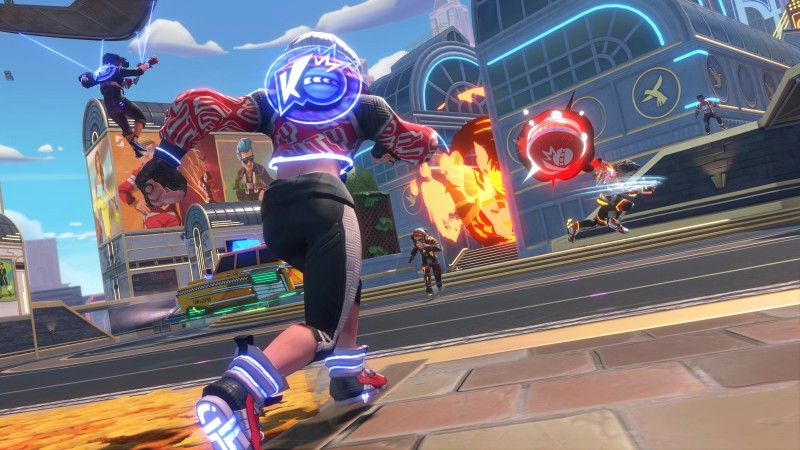
When unarmed, players can tackle opponents which causes them to drop balls. You can also do it to simply deter/grief them. Players can even roll themselves up into balls. This has a risk/reward element: opponents get knocked out instantly when hit by human balls, but you also risk enemies catching your teammates. Getting around involves basic platforming, and players have a glider for crossing larger gaps or to attack from above.
Knockout City is not a hero game. There are no specialized classes or individual loadouts. Every player controls exactly the same. Knockout City promotes skill-based play and, most of all, teamwork. For example, you’ll want to pass balls to teammates who may have a more advantageous position. Players can communicate using voice chat, and there are also in-game commands like “Pass it to me!” That said, there’s no actual pinging system ala Apex Legends. If you prefer playing with peeps you know, friends can form persistent, clan-like crews of up to 32 members to play together in Private Matches and take on rival squads.
Knockout City features full cross-play as well as cross-progression. You’ll still need to purchase the game again if you want it on another platform, though. This is an online only multiplayer title, meaning there’s no offline or single-player component. The closest thing to it is your hideout, the hub area where you can practice using moves and balls against a target dummy.
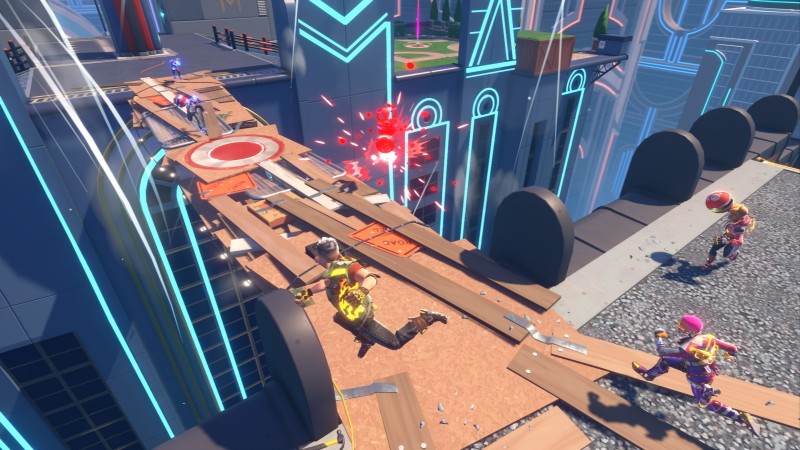
Modes
Knockout City has six different modes (either 3v3, 4v4, or free-for-all) and five playlists at launch. Street Play features quick matches while League Play houses more competitive rank-focused bouts. I got to play three modes in Street Play during my hands-on session: Team KO, Diamond Dash, and Ball-Up.
Team KO
Think of Team KO as the game’s take on standard deathmatch. It’s also my personal favorite. Teams earn points for every player that gets knocked out. Winning 2 out of 3 rounds wins the match. Team KO’s simplicity and relatively short length allows Knockout City’s core strengths to shine brightest, and it was the most fun I had with the game.
Diamond Dash
Those who enjoy Kill Confirmed in Call of Duty should find fun in Diamond Dash. Defeated foes drop diamonds that must be collected to earn points. Players can also grab their teammates diamonds to prevent opponents from reaping the rewards of their kills. This mode gets pretty chaotic since players are fighting to stay alive while also scrambling for diamonds.
Ball-Up
This 4v4 mode has no balls! Instead, players must throw their teammates. Ball-Up feels best played with friends as teamwork is especially crucial. Speaking from experience, trusting strangers to offer themselves as the ball can be a tall order to ask, especially if you aren’t using voice chat. During my sessions I found myself regularly playing ball (literally and figuratively) since my crew seemed hellbent on being the throwers instead of the throwies. Unfortunately, that often meant they rushed into skirmishes unarmed and paid for it. My most lopsided defeats came in this mode, as my team couldn’t decide who does what while my opponents found a balance, rotating two throwers and two balls. There’s potential for dumb fun, but Ball-Up lacked the consistent enjoyment of the other two modes.
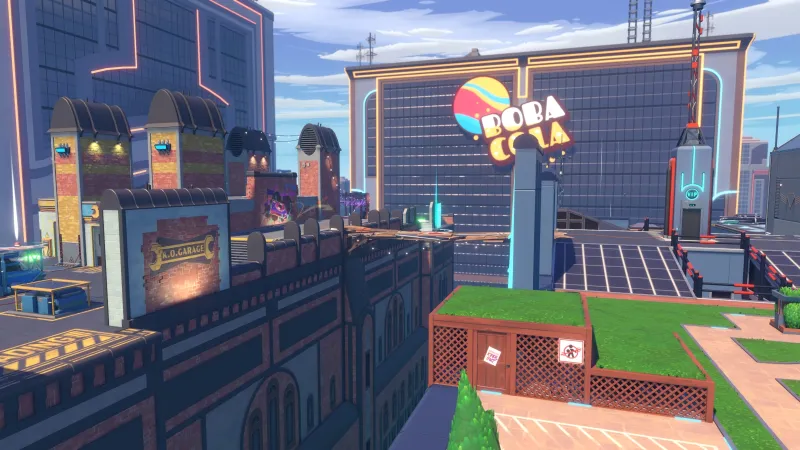
Maps
Knockout City will have five maps at launch, and I checked out three of them. My favorite map of the bunch was Rooftop Rumble. The area consists of two skyscrapers connected by a small bridge, which usually acts as a fun and chaotic choke point for teams to collide. In terms of size, it’s a happy medium: big enough to allow some degree of hiding and ambushing but compact enough for constant skirmishing and minimal downtime. Since it’s on a rooftop, it also sports the added perk/danger of sending foes over the edge.
Conversely, the expansive city streets of the Knockout Roundabout map feel far too large for 3v3 matches. There are some funny hazards, like having to dodge traffic, but half of my time there was spent wandering in search of either the opposing team or a ball. The third map, Concussion Yard, is a construction site and the smallest map I played. Its size means you’ll see constant action, and it’s multi-tiered platforms and giant, swinging wrecking ball hazard make it another enjoyable arena.
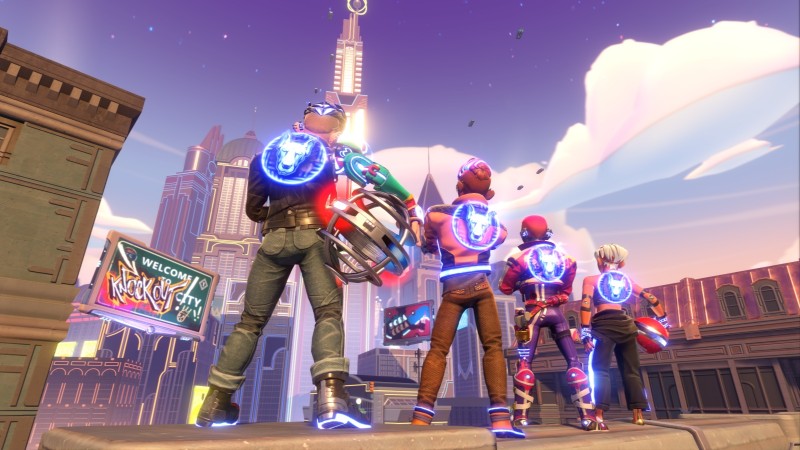
Customization, Monetization, And Progression
Despite its overall vibe, Knockout City is not a free-to-play game. Rather, it comes with a $19.99 price tag. That’s not bad, and it also show’s Velen’s commitment to making an enjoyable multiplayer game that’s free of the genre’s less savory trappings.
First and foremost, there are no loot boxes nor will there ever be, according to Velen’s CEO, Karthik Bala. Since Knockout City is skill-focused, the Brawl Shop, the in-game store, sells purely cosmetic items (such as clothing and emotes) purchased with currency earned while playing or bought using real money. For those averse to opening their actual wallets, Velen promises currency will be doled out “generously” during play, so hopefully players won’t have to grind forever to unlock a desired item.
Speaking of skins, players can customize their characters physical attributes, outfits, and logos. Characters have 17 cosmetic slots and players can save three character presets. Logos can be customized using pre-made parts; no, you can’t create a logo from scratch.
Knockout City features 100 tiers of built-in progression at launch with plenty of unlocks. Additionally, there are daily and weekly challenges as well as crew contracts, special tasks designed for squads to tackle. Velen plans plenty of free post-launch support with additional nine-week seasons that introduce new maps, balls, and cosmetics (some of which will be seasonally themed). Velen currently has no plans to introduce a Battle Pass.
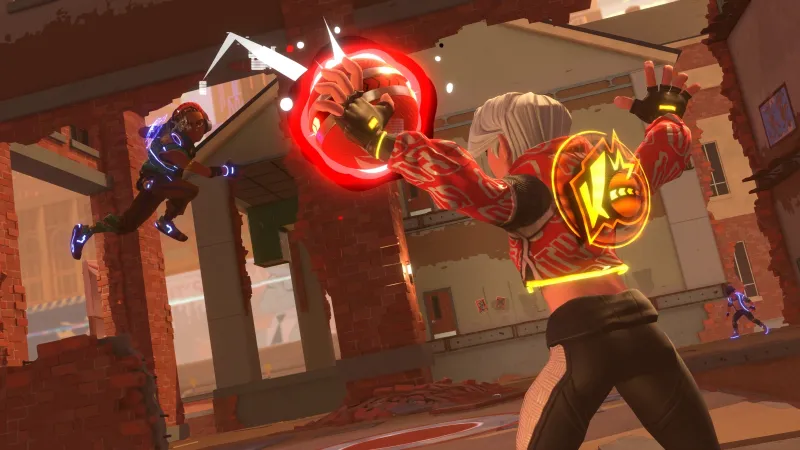
Is It Fun?
For the most part, it is! The inherent fun dodgeball shines through, and the game can be a genuine riot. As in real-life, it feels godly to dodge/catch multiple incoming balls as well as taking out a whole squad single-handedly. The controls feel good, and it’s easy to get the hang of the game after a match or two. The special balls add fun wrinkles, and I’m curious to see what the unrevealed balls entail. Plus, it’s always nice to have a competitive multiplayer game that doesn’t involve mowing down people with bullets, positioning Knockout City as a fun experience for all ages. I left my session itching to play more of it with friends.
Given its teamwork-first approach, voice chat feels like the way to go if you want to get the most out of Knockout City. Without it, knowing who to pass the ball to and when becomes a challenge. Voice chat wasn’t used in any of my matches, so games usually devolved into players running for their own balls and kind of doing their own thing, but together. It was still a fun time but it lacked the coordination you see in real-life dodgeball teams.
Knockout City looks decent from a fidelity standpoint but it’s attempt at a “cool” vibe feels somewhat soulless, especially since it lacks defined characters. It has personality; it just isn’t an interesting one. Velen says there’s a lore to the world, but that’s told through environmental cues and I’m not particularly interested in learning more. If Knockout City finds an audience, it’ll be because the dodgeball itself is enjoyable.
If Knockout City piques your interest, Velen is holding a PC closed beta period from February 20-21. There will also be a full game trial on launch day, so curious players can try before they buy. Knockout City has potential and with a few more months of polish and player feedback, it could be offer an entertaining alternative to standard multiplayer offerings. If it can dodge the pitfalls of other failed multiplayer titles, it just might have a shot a success.
